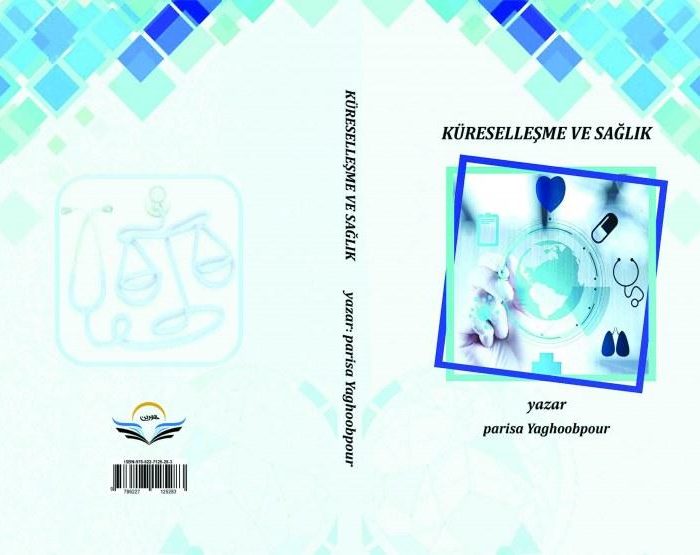کتاب Comparative study of French and Persian legal vocabularies
- صفحه نخست
- رشته ها
- ادبیات و زبان های خارجی
- کتاب Comparative study of French and Persian legal vocabularies
کتاب Comparative study of French and Persian legal vocabularies
۲۰۶,۰۰۰ تومان Original price was: ۲۰۶,۰۰۰ تومان.۱۴۹,۱۴۴ تومانCurrent price is: ۱۴۹,۱۴۴ تومان.
| تعداد صفحات | 103 |
|---|---|
| شابک | 978-622-378-557-3 |
| انتشارات |

کتاب Comparative Study of French and Persian Legal Vocabularies
درباره کتاب
کتاب Comparative Study of French and Persian Legal Vocabularies اثری پژوهشی و تخصصی است که به بررسی تطبیقی واژگان حقوقی در زبانهای فرانسه و فارسی میپردازد. این اثر تلاش میکند تفاوتها و شباهتهای ساختاری و مفهومی میان اصطلاحات حقوقی این دو زبان را برجسته کند و زمینهای برای درک بهتر مفاهیم حقوقی در متون و ترجمههای قانونی فراهم سازد.
موضوعات کلیدی کتاب
- تحلیل واژگان حقوقی: بررسی دقیق ساختار، معنا و کاربرد اصطلاحات حقوقی در زبان فرانسه و فارسی.
- تفاوتهای فرهنگی و حقوقی: تحلیل تأثیر نظامهای حقوقی مختلف بر شکلگیری واژگان در هر زبان.
- اصطلاحات مشترک و متمایز: معرفی واژگان معادل، نزدیکمعنا یا غیرقابلتطبیق در دو زبان.
- کاربرد در ترجمه حقوقی: راهنمایی برای مترجمان حرفهای در حوزه حقوقی و قضایی.
- رویکرد تطبیقی: مقایسهای دقیق میان سیستمهای حقوقی کشورهای فرانسویزبان و ایران.
ویژگیهای برجسته کتاب
- بینرشتهای بودن: ترکیب دانش زبانشناسی و حقوق در تحلیل اصطلاحات.
- رویکرد عملی: ارائه نمونههای کاربردی برای استفاده در ترجمه حقوقی.
- قابلیت آموزشی: مناسب برای دانشجویان زبان فرانسه و حقوق در تمام سطوح.
- منابع معتبر: بهرهگیری از قوانین، اسناد و متون معتبر حقوقی برای تجزیهوتحلیل.
چرا این کتاب را بخوانیم؟
این کتاب برای علاقهمندان به مطالعات زبانشناسی و حقوقی منبعی ارزشمند است. با مطالعه این اثر میتوانید به درک عمیقتری از نظامهای حقوقی مختلف و تأثیر آنها بر زبان دست یابید. همچنین، برای مترجمان حقوقی، ابزاری ضروری برای بهبود کیفیت ترجمهها محسوب میشود.
مخاطبان کتاب
- دانشجویان و پژوهشگران رشتههای حقوق، زبانشناسی و مطالعات ترجمه.
- مترجمان حرفهای در حوزه حقوقی و قضایی.
- علاقهمندان به مطالعات تطبیقی زبان و فرهنگ.
- وکلا و مشاوران حقوقی با فعالیت بینالمللی.
سفارش کتاب
برای تهیه کتاب Comparative Study of French and Persian Legal Vocabularies، میتوانید به فروشگاه اینترنتی ما مراجعه کرده یا از طریق تماس با ما، سفارش خود را ثبت کنید. این کتاب گامی مهم در درک زبان حقوقی در دو فرهنگ و زبان متفاوت است.
پرسش و پاسخهای کاربردی درباره
📚 مطالعه تطبیقی واژگان حقوقی فرانسوی و فارسی ⚖️
۱️⃣ چالشهای اصلی در ترجمه متون حقوقی چیست؟ 🤔
✅ پاسخ: ترجمه متون حقوقی چالشبرانگیز است، زیرا:
🔹 تفاوتهای اصطلاحشناختی بین زبانها وجود دارد.
🔹 متون حقوقی پیچیده و وابسته به سیستمهای قانونی هستند.
🔹 مفاهیم حقوقی هر کشور خاص همان کشور است و ممکن است معادل مستقیمی در زبان دیگر نداشته باشد.
۲️⃣ ویژگیهای اصلی متون حقوقی چیست؟ 📜
✅ پاسخ:
✔ دقیق و بدون ابهام برای جلوگیری از سوءبرداشتها.
✔ رسمی و الزامآور، دارای اعتبار قانونی.
✔ وابسته به بافت حقوقی خاص هر کشور.
✔ ساختارمند و دارای اصطلاحات تخصصی و ثابت.
۳️⃣ تاریخچه ترجمه متون حقوقی چگونه بوده است؟ 📖
✅ پاسخ: ترجمه متون حقوقی از ترجمه تحتاللفظی به سمت رویکردهای کاربردیتر مانند معادلیابی معنایی و کارکردی تکامل یافته است تا مفهوم و هدف حقوقی بهدرستی منتقل شود.
۴️⃣ تفاوتهای اصلی بین سیستم قضایی فرانسه و ایران چیست؟ ⚖️🇫🇷🇮🇷
✅ پاسخ:
🔹 سیستم قضایی فرانسه: مبتنی بر حقوق مدنی (Civil Law) و بر اساس کد ناپلئون است.
🔹 سیستم قضایی ایران: ترکیبی از حقوق اسلامی (فقه شیعه) و قوانین موضوعه است.
۵️⃣ تفاوتهای اصلی در قوانین ازدواج فرانسه و ایران چیست؟ 💍
✅ پاسخ:
🔹 فرانسه: ازدواج یک قرارداد مدنی است که نیاز به ثبت رسمی دارد و مراسم مذهبی اختیاری است.
🔹 ایران: ازدواج بر اساس قوانین اسلامی است و نیاز به عقد نکاح شرعی دارد که میتواند شامل شروطی باشد که طرفین تعیین میکنند.
۶️⃣ اجزای اصلی یک سند ازدواج در ایران چیست؟ 📄
✅ پاسخ:
✔ مشخصات کامل زوجین.
✔ مقدار مهریه و شرایط پرداخت آن.
✔ امضای شهود و طرفین.
✔ ذکر شروط ضمن عقد (در صورت وجود).
✔ اعتبار شرعی و قانونی عقد.
۷️⃣ انواع معادلیابی در ترجمه حقوقی کدامند؟ 🔄
✅ پاسخ:
✔ معادل زبانی: ترجمه واژه به واژه.
✔ معادل ارجاعی: استفاده از اصطلاحی که معنای حقوقی مشابهی دارد.
✔ معادل کارکردی: انتخاب واژهای که نقش مشابهی در سیستم حقوقی مقصد دارد.
✔ معادل تفسیری: ترجمهای که مفهوم و پیامدهای قانونی را منتقل میکند.
۸️⃣ رویکرد وینای و داربلنه در ترجمه حقوقی چیست؟ 📝
✅ پاسخ: این روش پیشنهاد میکند که از ترجمه مستقیم و غیرمستقیم استفاده شود و تمرکز بر معادلیابی کاربردی و کارکردی باشد نه ترجمه تحتاللفظی.
۹️⃣ تأثیر فرهنگ در ترجمه حقوقی چیست؟ 🌍
✅ پاسخ: قوانین و اصطلاحات حقوقی در بستر فرهنگی و تاریخی خاصی شکل گرفتهاند. برخی واژههای حقوقی در فارسی مانند قصاص، دیه، نفقه معادل دقیقی در زبان فرانسه ندارند و نیاز به توضیح و بومیسازی دارند.
🔟 دیدگاه “اومبرتو اکو” در مورد ترجمه حقوقی چیست؟ 🔍
✅ پاسخ: اومبرتو اکو معتقد است که ترجمه فقط انتقال واژهها نیست، بلکه انتقال معنا و مفهوم است. در ترجمه حقوقی باید مفهوم و پیامدهای قانونی نیز در نظر گرفته شود.
۱️⃣۱️⃣ رایجترین اصطلاحات حقوقی در اسناد ازدواج ایران چیست؟ 📑
✅ پاسخ: برخی از اصطلاحات مهم عبارتند از:
🔹 مهریه: مبلغی که زوج متعهد به پرداخت آن به زوجه میشود.
🔹 نکاح: قرارداد ازدواج شرعی.
🔹 ولی قهری: سرپرست قانونی زوجه در هنگام عقد (در صورت لزوم).
۱️⃣۲️⃣ تحلیل ترجمههای حقوقی چگونه انجام میشود؟ 📊
✅ پاسخ:
✔ مقایسه جداول معادلیابی مترجمان.
✔ استفاده از مدلهای ترجمه مانند وینای و داربلنه و اومبرتو اکو.
✔ بررسی نحوه انتقال مفاهیم حقوقی و فرهنگی در ترجمهها.
۱️⃣۳️⃣ چرا معادلیابی کارکردی در ترجمه حقوقی اهمیت دارد؟ 🔄
✅ پاسخ: از آنجا که اصطلاحات حقوقی در هر کشور معنای خاصی دارند، معادلیابی کارکردی تضمین میکند که عملکرد و تأثیر قانونی واژه در زبان مقصد حفظ شود، حتی اگر اصطلاحات یکسان نباشند.
۱️⃣۴️⃣ بهترین استراتژیهای ترجمه متون حقوقی چیست؟ ✍️
✅ پاسخ:
✔ آشنایی کامل با هر دو سیستم حقوقی.
✔ استفاده از رویکرد کارکردی و تفسیری به جای ترجمه لغوی.
✔ مراجعه به واژهنامههای حقوقی رسمی.
✔ مشورت با متخصصان حقوقی برای اطمینان از دقت ترجمه.
۱️⃣۵️⃣ تفاوت واژگان حقوقی فرانسه و فارسی چیست؟ ⚖️
✅ پاسخ:
🔹 واژگان حقوقی فرانسوی ریشه در حقوق رومی و لاتین دارند.
🔹 واژگان حقوقی فارسی تحت تأثیر فقه اسلامی و حقوق شرعی هستند.
🔹 برخی مفاهیم فارسی، فاقد معادل مستقیم در زبان فرانسه هستند و نیاز به توضیح و بومیسازی دارند.
🎯 جمعبندی
ترجمه حقوقی تنها انتقال واژهها نیست، بلکه انتقال مفهوم، حقوق و فرهنگ است. شناخت سیستمهای حقوقی، روشهای معادلیابی و تفاوتهای فرهنگی برای ترجمه دقیق و کاربردی متون حقوقی ضروری است. ✅
| تعداد صفحات | 103 |
|---|---|
| شابک | 978-622-378-557-3 |
| انتشارات |
محصولات مشابه
-
کتاب KÜRESELLEŞME VE SAĞLIK
۴۶۸,۰۰۰ تومانOriginal price was: ۴۶۸,۰۰۰ تومان.۳۲۳,۸۵۶ تومانCurrent price is: ۳۲۳,۸۵۶ تومان. -
کتاب اوماگاتوکی ملاقات ارواح و یوکای در اساطیر ژاپن
۴۳۰,۰۰۰ تومانOriginal price was: ۴۳۰,۰۰۰ تومان.۲۹۴,۱۲۰ تومانCurrent price is: ۲۹۴,۱۲۰ تومان. -
کتاب I’m you!
۲۸۰,۰۰۰ تومانOriginal price was: ۲۸۰,۰۰۰ تومان.۱۸۹,۲۸۰ تومانCurrent price is: ۱۸۹,۲۸۰ تومان.






